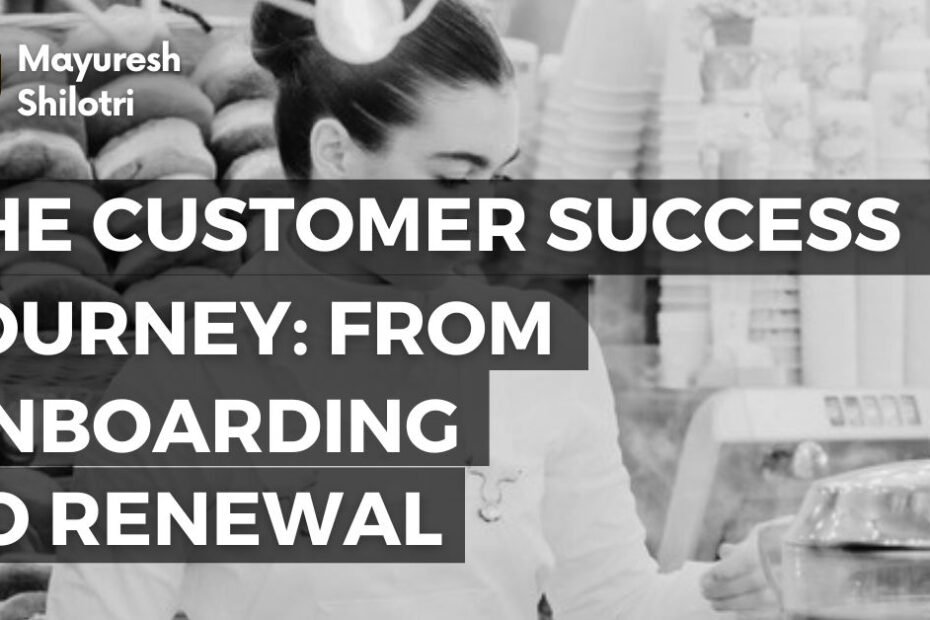The customer success journey is a multifaceted process that encompasses the entire lifecycle of a customer’s interaction with a product or service. It begins the moment a potential customer becomes aware of a brand and continues through the stages of consideration, purchase, onboarding, usage, and ultimately renewal or churn. Each phase of this journey is critical, as it shapes the customer’s perception and experience with the brand.
Understanding this journey requires a deep dive into the motivations, expectations, and behaviors of customers at each stage. At the awareness stage, customers are often seeking solutions to specific problems. They may conduct online research, read reviews, or seek recommendations from peers.
This initial phase is crucial for businesses to establish a strong presence and communicate their value proposition effectively. As customers move into the consideration phase, they begin to evaluate different options, comparing features, pricing, and customer support. This is where businesses must ensure that their messaging resonates with potential customers and addresses their pain points.
The transition from consideration to purchase is often influenced by factors such as trust, perceived value, and the overall customer experience provided during these early interactions.
Key Takeaways
- Understanding the customer success journey is crucial for identifying pain points and opportunities for improvement in the customer experience.
- Effective onboarding is essential for setting the stage for long-term customer success and satisfaction.
- Nurturing customer relationships through personalized communication and support is key to retaining customers for the long term.
- Proactive support and engagement strategies help in addressing customer needs before they become major issues, leading to higher satisfaction and loyalty.
- Monitoring customer health and satisfaction through feedback and data analysis is vital for identifying areas of improvement and maintaining high customer satisfaction levels.
The Importance of Onboarding in Customer Success
Reducing Time-to-Value and Building Relationships
When executed properly, onboarding can reduce time-to-value, allowing customers to experience the benefits of the product sooner. Moreover, onboarding is not just about teaching customers how to use a product; it’s also about building relationships. During this phase, companies have the opportunity to connect with customers on a personal level, understanding their unique needs and goals.Fostering Trust and Loyalty
This connection fosters trust and loyalty, which are essential for long-term success. For instance, companies that implement personalized onboarding experiences—tailoring content and support based on individual customer profiles—often see higher engagement rates and lower churn rates.Setting the Stage for Success
By investing time and resources into effective onboarding, businesses can set the stage for a successful customer journey.Nurturing Customer Relationships for Long-Term Success

Nurturing customer relationships is an ongoing process that extends well beyond the initial sale or onboarding phase. It involves continuous engagement and communication to ensure that customers feel valued and supported throughout their journey. Regular check-ins, personalized follow-ups, and proactive outreach can help maintain a strong connection with customers.
This relationship-building approach not only enhances customer satisfaction but also encourages loyalty and advocacy. One effective strategy for nurturing relationships is to leverage customer feedback actively. By soliciting input through surveys or direct conversations, businesses can gain valuable insights into customer needs and preferences.
This information can then be used to tailor offerings or improve services, demonstrating to customers that their opinions matter. Additionally, recognizing milestones—such as anniversaries or usage achievements—can further strengthen relationships. Celebrating these moments fosters a sense of community and belonging among customers, making them more likely to remain loyal to the brand.
Proactive Support and Engagement Strategies
Proactive support is an essential component of customer success that focuses on anticipating customer needs before they arise. Rather than waiting for customers to reach out with issues or questions, businesses can implement strategies that identify potential challenges early on. This might involve monitoring usage patterns or employing analytics tools to detect signs of disengagement or dissatisfaction.
By addressing these issues proactively, companies can prevent churn and enhance overall customer satisfaction. Engagement strategies play a crucial role in maintaining an ongoing dialogue with customers. Regular communication through newsletters, webinars, or educational content keeps customers informed about new features or best practices.
Additionally, creating opportunities for customers to connect with one another—such as user groups or forums—can foster a sense of community and encourage knowledge sharing. These proactive measures not only enhance the customer experience but also position the company as a trusted partner in their success.
Monitoring Customer Health and Satisfaction
Monitoring customer health is vital for understanding how well customers are engaging with a product or service over time. This involves tracking key performance indicators (KPIs) such as usage frequency, feature adoption rates, and overall satisfaction scores. By analyzing these metrics, businesses can identify trends and patterns that may indicate potential issues or opportunities for improvement.
For instance, if a significant number of customers are not utilizing certain features, it may signal a need for additional training or support. Customer satisfaction surveys are another valuable tool for gauging health. These surveys can provide insights into how customers perceive their experience with the product and the company as a whole.
By regularly collecting feedback and acting on it, businesses can demonstrate their commitment to continuous improvement. Moreover, implementing Net Promoter Score (NPS) surveys can help identify brand advocates as well as those at risk of churning. Understanding these dynamics allows companies to tailor their strategies accordingly, ensuring they meet customer needs effectively.
Strategies for Upselling and Cross-Selling

Unlocking Revenue Potential
Upselling and cross-selling are powerful strategies that can significantly enhance revenue while also providing additional value to customers. Upselling involves encouraging customers to purchase a higher-end product or service that offers more features or benefits than what they initially considered. Cross-selling, on the other hand, focuses on promoting complementary products that enhance the overall experience.Understanding Customer Needs
Both strategies require a deep understanding of customer needs and preferences to be effective. To successfully implement upselling and cross-selling strategies, businesses should leverage data analytics to identify opportunities based on customer behavior and purchase history.Personalized Recommendations
For example, if a customer frequently uses a particular feature of a software product, they may benefit from an upgraded plan that offers advanced capabilities. Similarly, if a customer purchases a camera, suggesting accessories like lenses or tripods can enhance their experience while increasing sales for the company. Personalization is key; tailored recommendations based on individual usage patterns can lead to higher conversion rates and increased customer satisfaction.Renewal and Retention: Keeping Customers Happy
Renewal and retention are critical aspects of customer success that directly impact a company’s bottom line. Retaining existing customers is often more cost-effective than acquiring new ones; therefore, businesses must prioritize strategies that keep customers engaged and satisfied over time. This involves not only delivering exceptional products but also providing ongoing support and value throughout the relationship.
One effective approach to enhancing renewal rates is to establish clear communication channels with customers leading up to their renewal date. This could include reminders about upcoming renewals, discussions about any changes in pricing or features, and opportunities for feedback on their experience thus far. Additionally, offering incentives such as discounts for early renewals or loyalty rewards can encourage customers to commit for another term.
By demonstrating appreciation for their business and addressing any concerns proactively, companies can foster long-term loyalty.
Continuous Improvement in Customer Success
Continuous improvement in customer success is essential for adapting to changing market conditions and evolving customer expectations. Businesses must remain agile and responsive to feedback while consistently seeking ways to enhance their offerings and processes. This commitment to improvement not only benefits customers but also positions companies as leaders in their respective industries.
Implementing regular training programs for customer success teams can significantly contribute to this goal. By equipping team members with the latest knowledge about products, industry trends, and best practices in customer engagement, organizations can ensure they are providing top-notch support. Additionally, fostering a culture of innovation within the organization encourages employees to share ideas for improving customer experiences.
Whether through new technologies or refined processes, continuous improvement ultimately leads to greater customer satisfaction and loyalty over time. In conclusion, understanding the intricacies of the customer success journey is paramount for businesses aiming to thrive in today’s competitive landscape. From effective onboarding practices to proactive support strategies and continuous improvement initiatives, each element plays a vital role in nurturing long-term relationships with customers.
By prioritizing these aspects of customer success, organizations can not only enhance satisfaction but also drive growth through increased retention and upselling opportunities.



